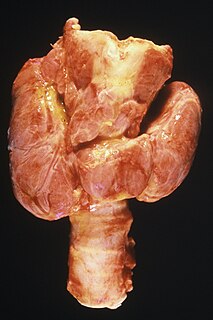Biography
Sisson was born in Barton, Lincolnshire in 1870, the son of William Harling Sissons, a surgeon. He attended Sir John Nelthorpe Grammar School in Brigg, and subsequently graduated from Pembroke College, Cambridge, in 1892, [2] and was made deacon in 1896, [3] the same year in which he received his M.A. During a curacy at St Luke's, Leicester, he was ordained as a priest in December 1897. From 1902 to 1905 he was a curate at Duddington, Northamptonshire.

Barton-upon-Humber or Barton is a town and civil parish in the North Lincolnshire district, in the county of Lincolnshire, England. The population at the 2011 census was 11,066. It is situated on the south bank of the Humber Estuary at the southern end of the Humber Bridge. It is 46 miles (74 km) east of Leeds, 6 miles (10 km) south-west of Kingston upon Hull and 31 miles (50 km) north north-east of the county town of Lincoln. Other nearby towns include Scunthorpe to the south-west and Grimsby to the south-east.
The Sir John Nelthorpe School, is a secondary school and sixth form on Grammar School Road and Wrawby Road in Brigg, North Lincolnshire, England. The present school was established in 1976, and has a timeline through earlier schools to that established by Sir John Nelthorpe in 1669.

Pembroke College is a constituent college of the University of Cambridge, England. The college is the third-oldest college of the university and has over seven hundred students and fellows. Physically, it is one of the university's larger colleges, with buildings from almost every century since its founding, as well as extensive gardens. Its members are termed "Valencians".
He was appointed chaplain to the English congregation in Bern, Switzerland, at the end of 1904, and took up his post in April 1905. He stayed for a little over two years. [4]

Bern or Berne is the de facto capital of Switzerland, referred to by the Swiss as their "federal city", in German Bundesstadt, French ville fédérale, and Italian città federale. With a population of about 140,000, Bern is the fifth-most populous city in Switzerland. The Bern agglomeration, which includes 36 municipalities, had a population of 406,900 in 2014. The metropolitan area had a population of 660,000 in 2000. Bern is also the capital of the canton of Bern, the second-most populous of Switzerland's cantons.
During this time, his mother, Jane Thompson Sissons, who was about 65, attended Professor Kocher's clinic, presumably for a goitre operation. Through her contact with the mother of a fellow patient, Mrs Castleman, the money which was being appealed for to build the new church of St Ursula's, Berne, at Jubiläumsplatz was eventually donated. [5]

Emil Theodor Kocher was a Swiss physician and medical researcher who received the 1909 Nobel Prize in Physiology or Medicine for his work in the physiology, pathology and surgery of the thyroid. Among his many accomplishments are the introduction and promotion of aseptic surgery and scientific methods in surgery, specifically reducing the mortality of thyroidectomies below 1% in his operations.

A goitre, or goiter, is a swelling in the neck resulting from an enlarged thyroid gland. A goitre can be associated with a thyroid that is not functioning properly.
He subsequently moved to St John's, Menton, where he stayed from 1907 until [6] 1916. He next moved to All Saints', Rome for four years, and became Rural Dean for Italy and Malta, as well as the French Riviera. In 1921 he moved to Venice, in 1922 to Alassio, and from 1932 to his retirement in 1934 he was at Bordighera.

All Saints' Church is an active English-speaking chaplaincy of the Church of England's Diocese in Europe - a part of the Anglican Communion - in Rome, Italy.
The archdeacons in the Diocese in Europe are senior clergy of the Church of England Diocese in Europe. They each have responsibility over their own archdeaconry, of which there are currently seven, each of which is composed of one or more deaneries, which are composed in turn of chaplaincies.

St George's Church, Venice is an Anglican parish church in Venice, Italy in the Diocese in Europe.
He died on 27 December 1940. [7] ‘
This page is based on this
Wikipedia article Text is available under the
CC BY-SA 4.0 license; additional terms may apply.
Images, videos and audio are available under their respective licenses.









